La desinenza estinta
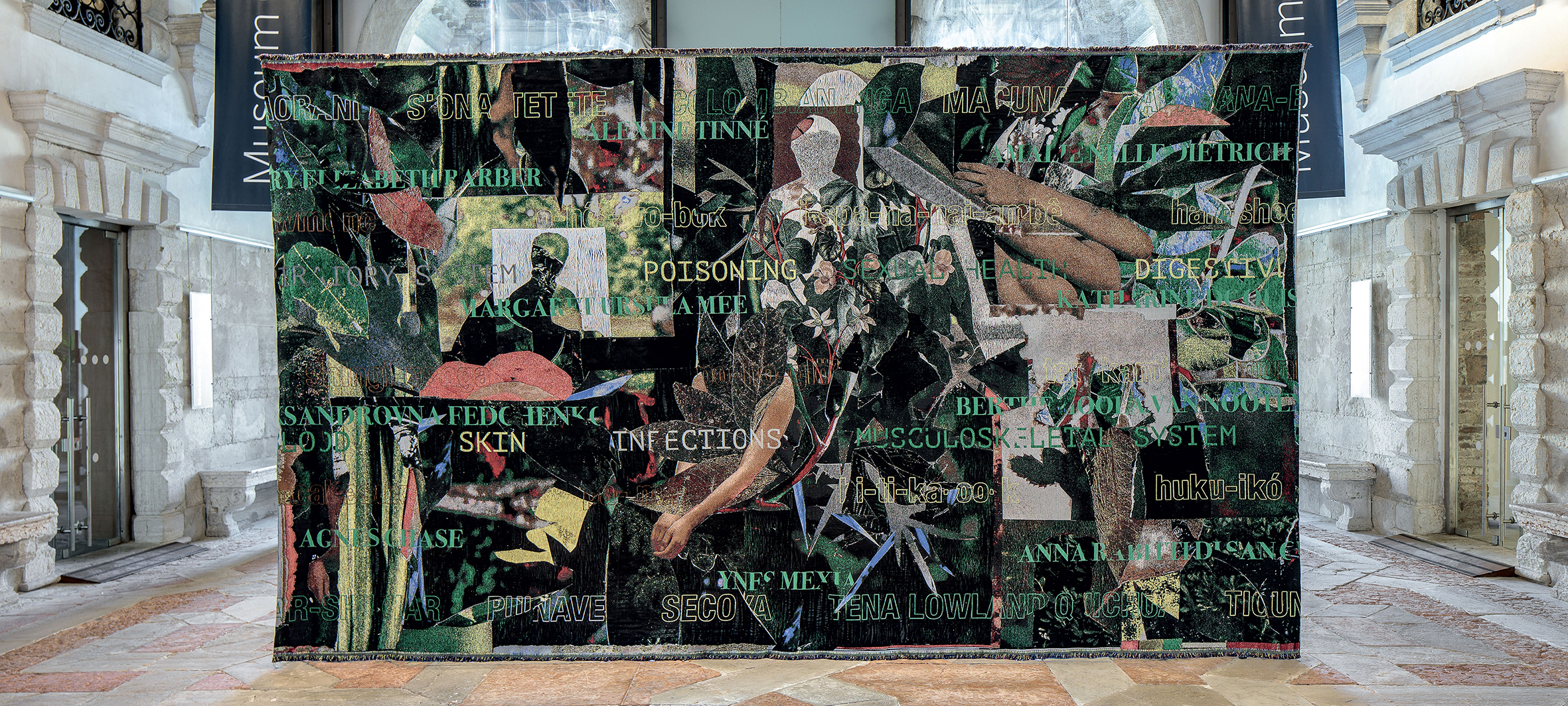
Jacquard fabric with lampas effect on the weft, 300 x 500 cm. Installation view Ca’ Pesaro Galleria Internazionale d’Arte Moderna, Venice. Photo Francesco Allegretto
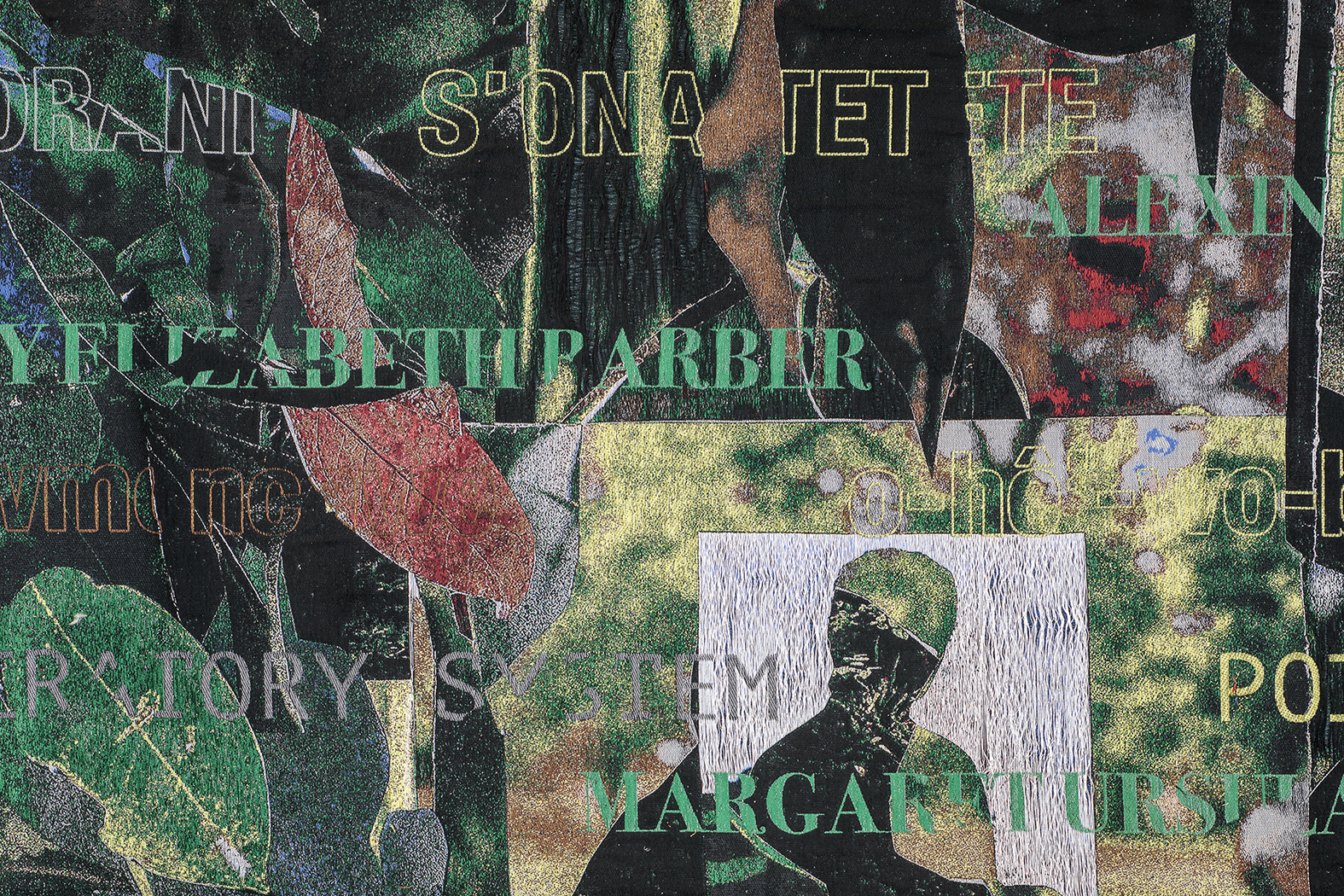
Jacquard fabric with lampas effect on the weft, 300 x 500 cm. Detail. Photo Francesco Allegretto
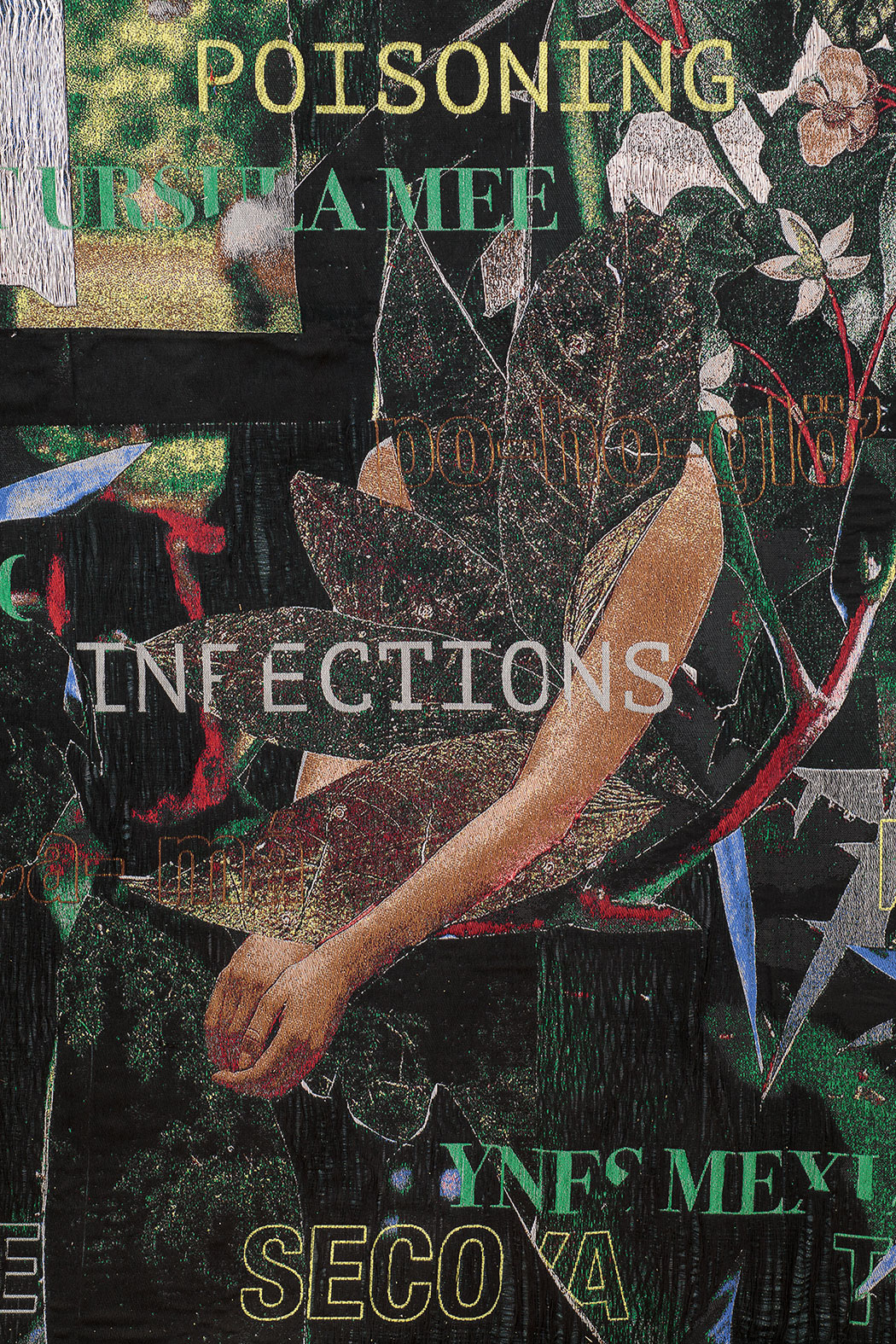
Jacquard fabric with lampas effect on the weft, 300 x 500 cm. Detail. Photo Francesco Allegretto
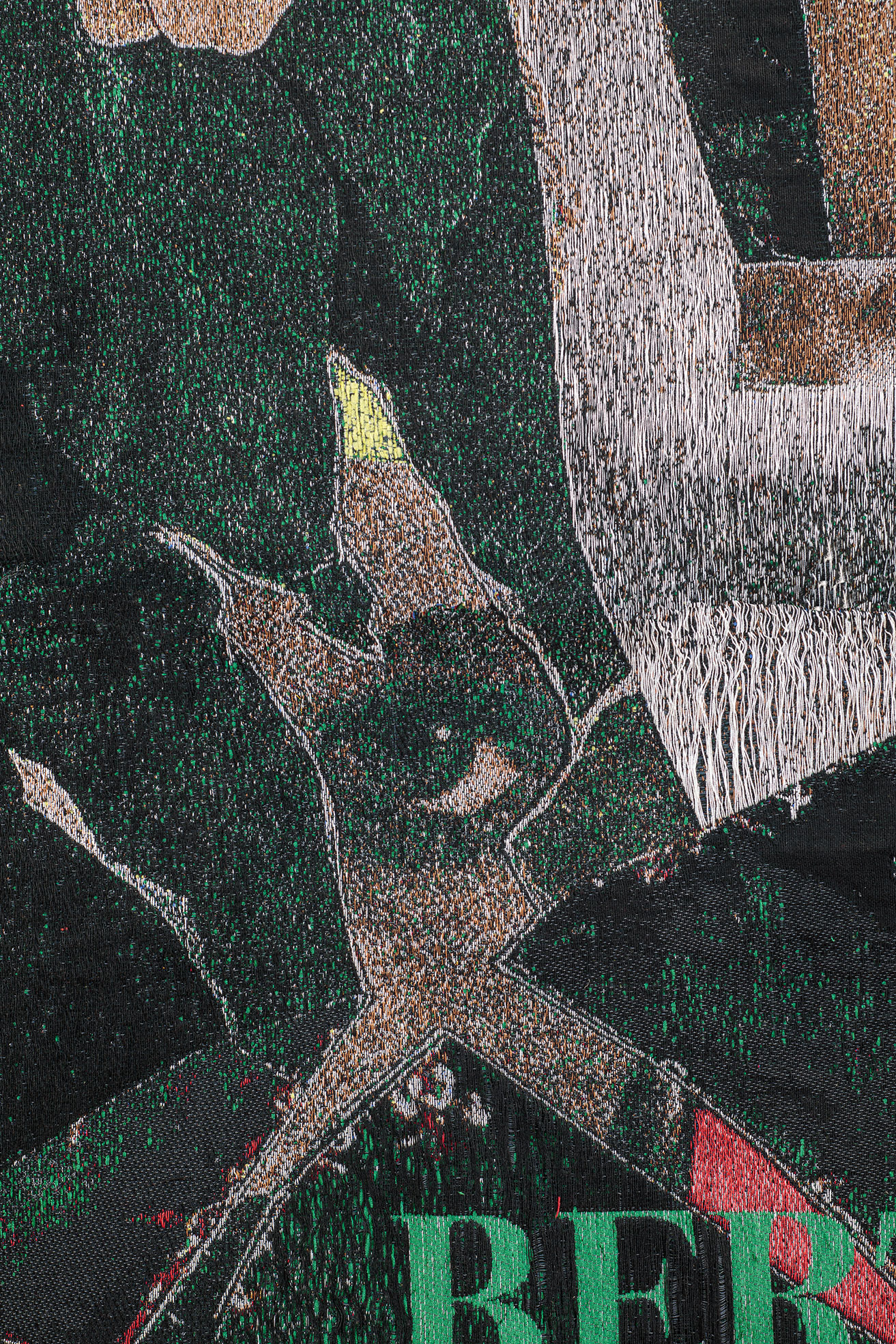
Jacquard fabric with lampas effect on the weft, 300 x 500 cm. Detail. Photo Francesco Allegretto
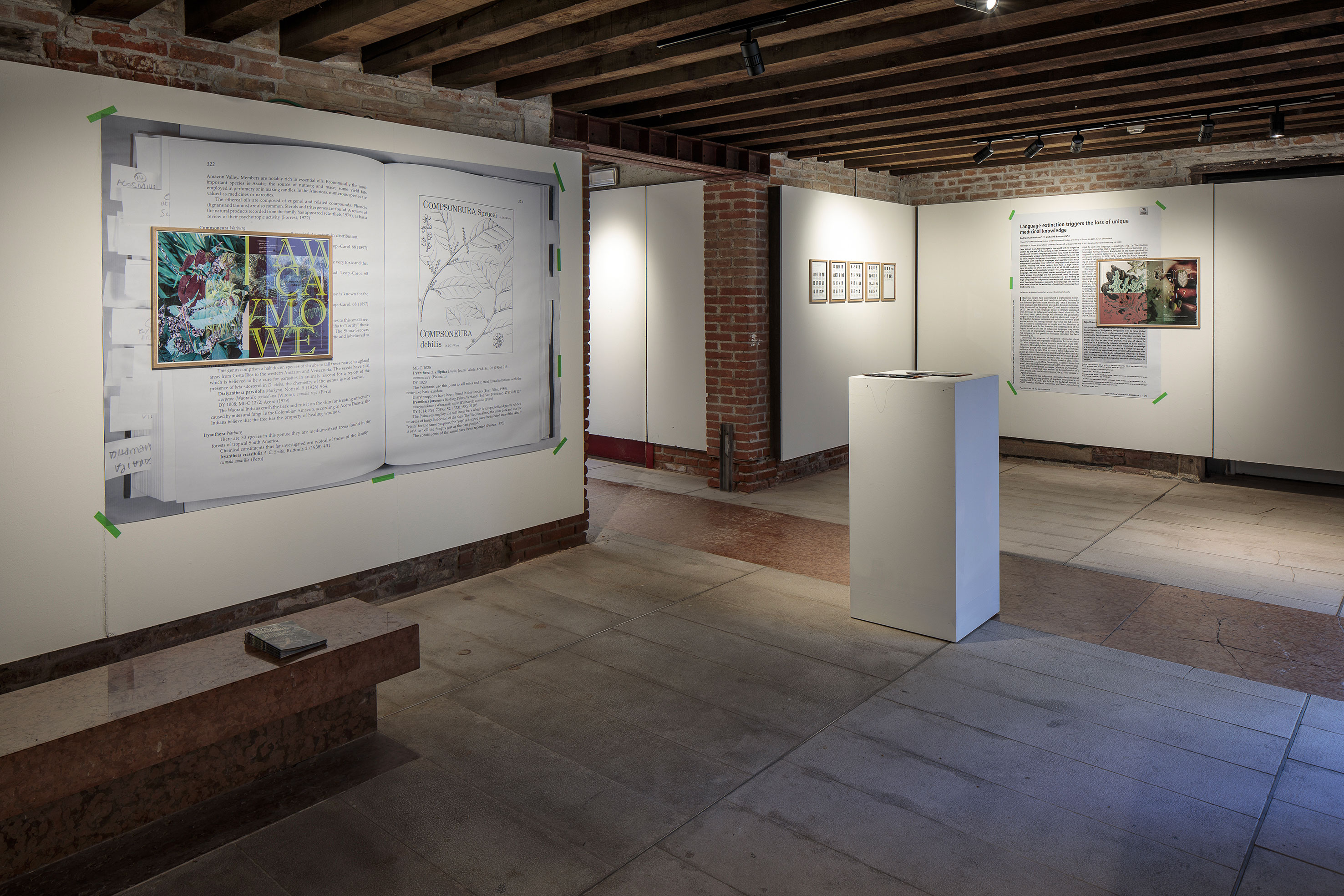
Prints on paper and on cotton paper. Installation view Ca’ Pesaro Galleria Internazionale d’Arte Moderna, Venice. Photo Francesco Allegretto
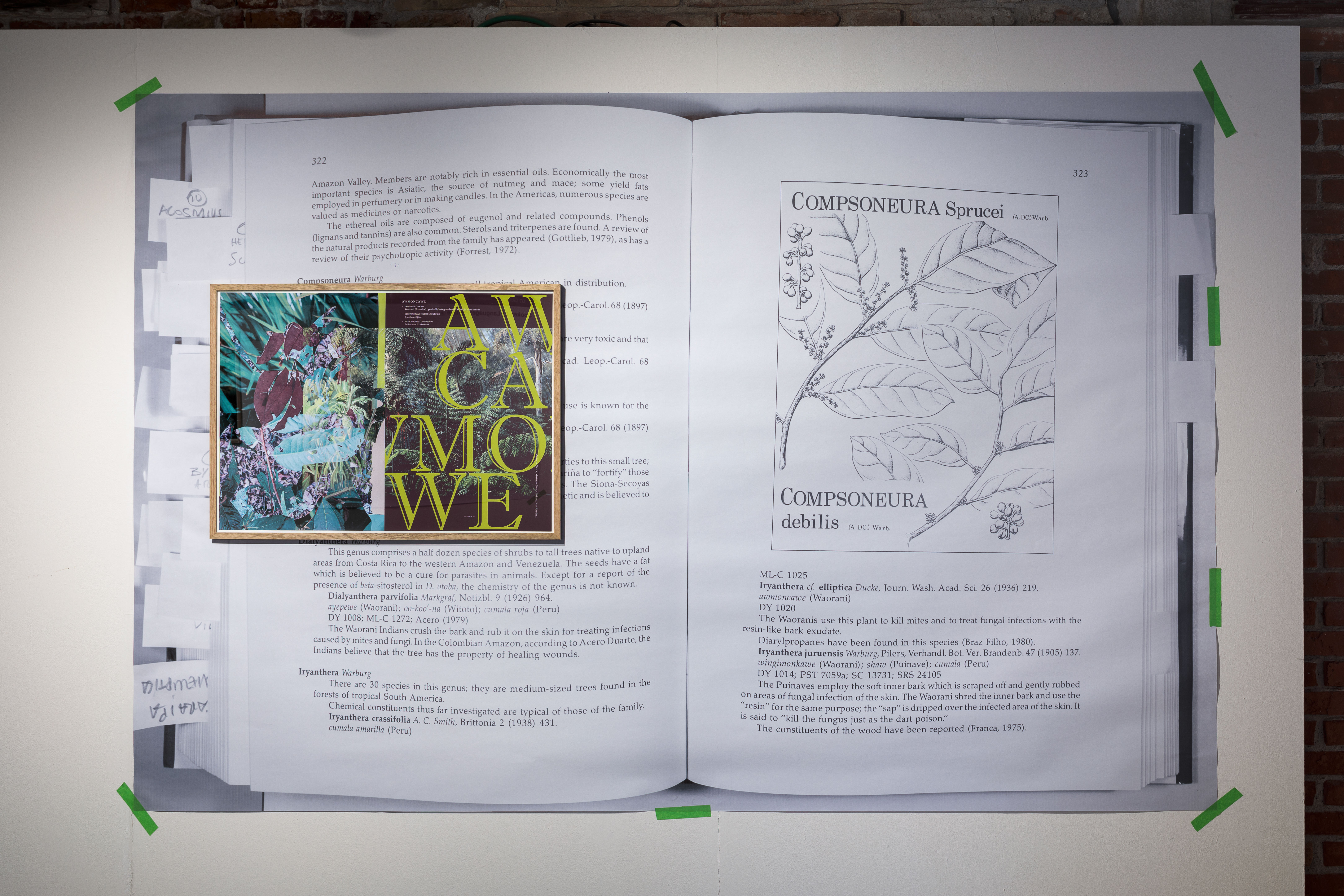
Prints on paper and on cotton paper. Installation view Ca’ Pesaro Galleria Internazionale d’Arte Moderna, Venice. Photo Francesco Allegretto
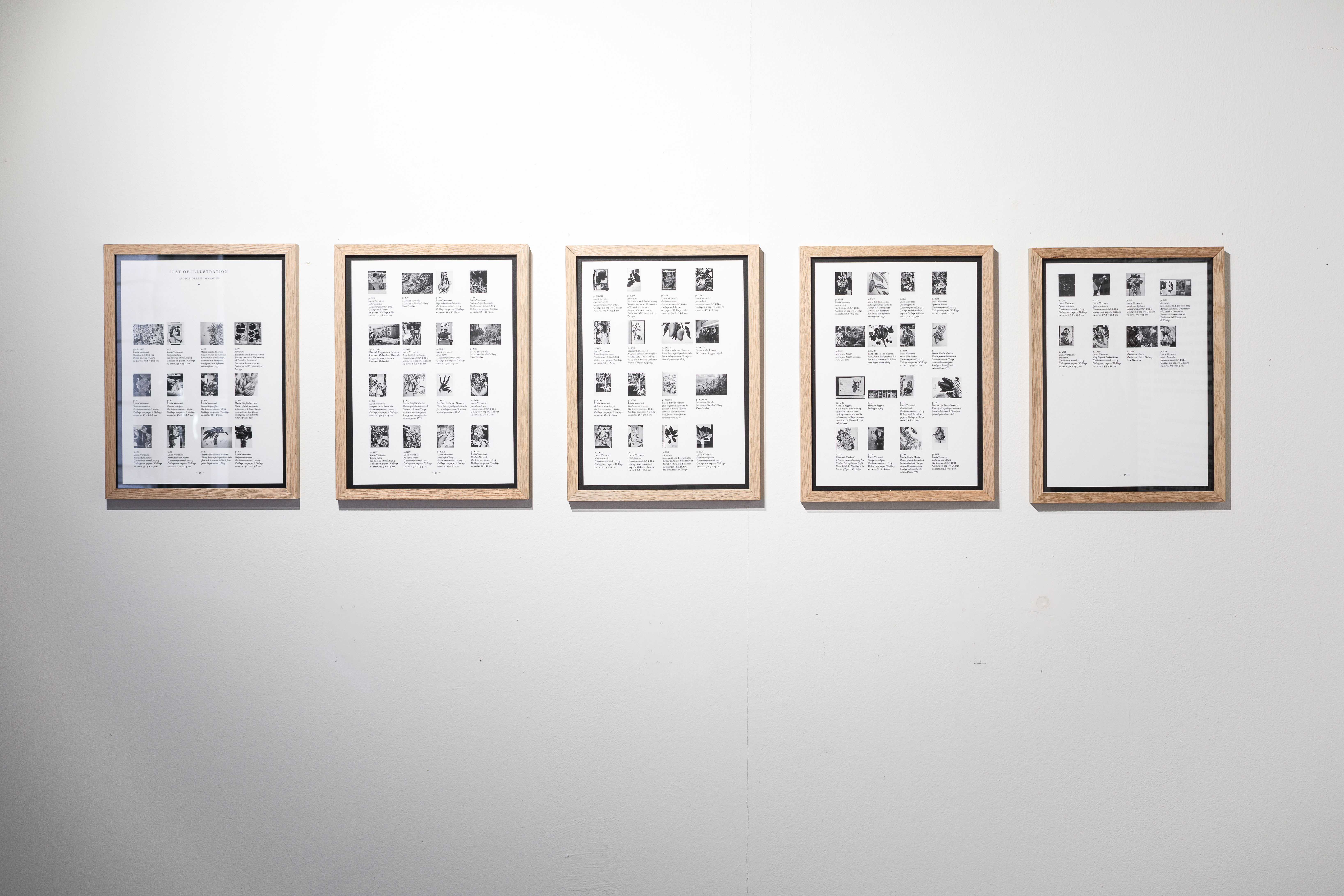
Prints on cotton paper. Installation view Ca’ Pesaro Galleria Internazionale d’Arte Moderna, Venice. Photo Francesco Allegretto
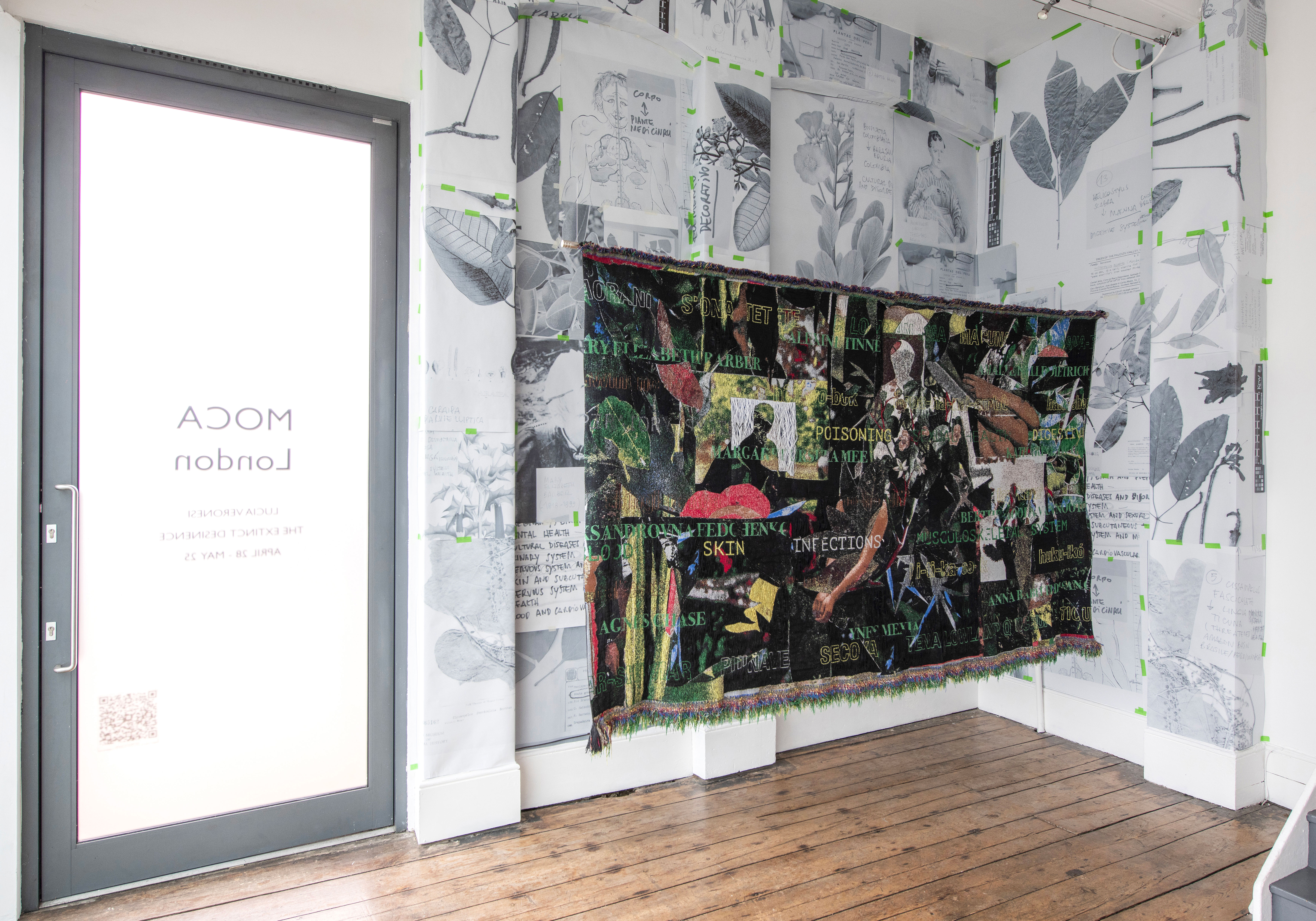
Jacquard fabric with lampas effect on the weft, 150 x 250 cm. 1/5 Edition. Installation view Moca London. Photo Justin Piperger
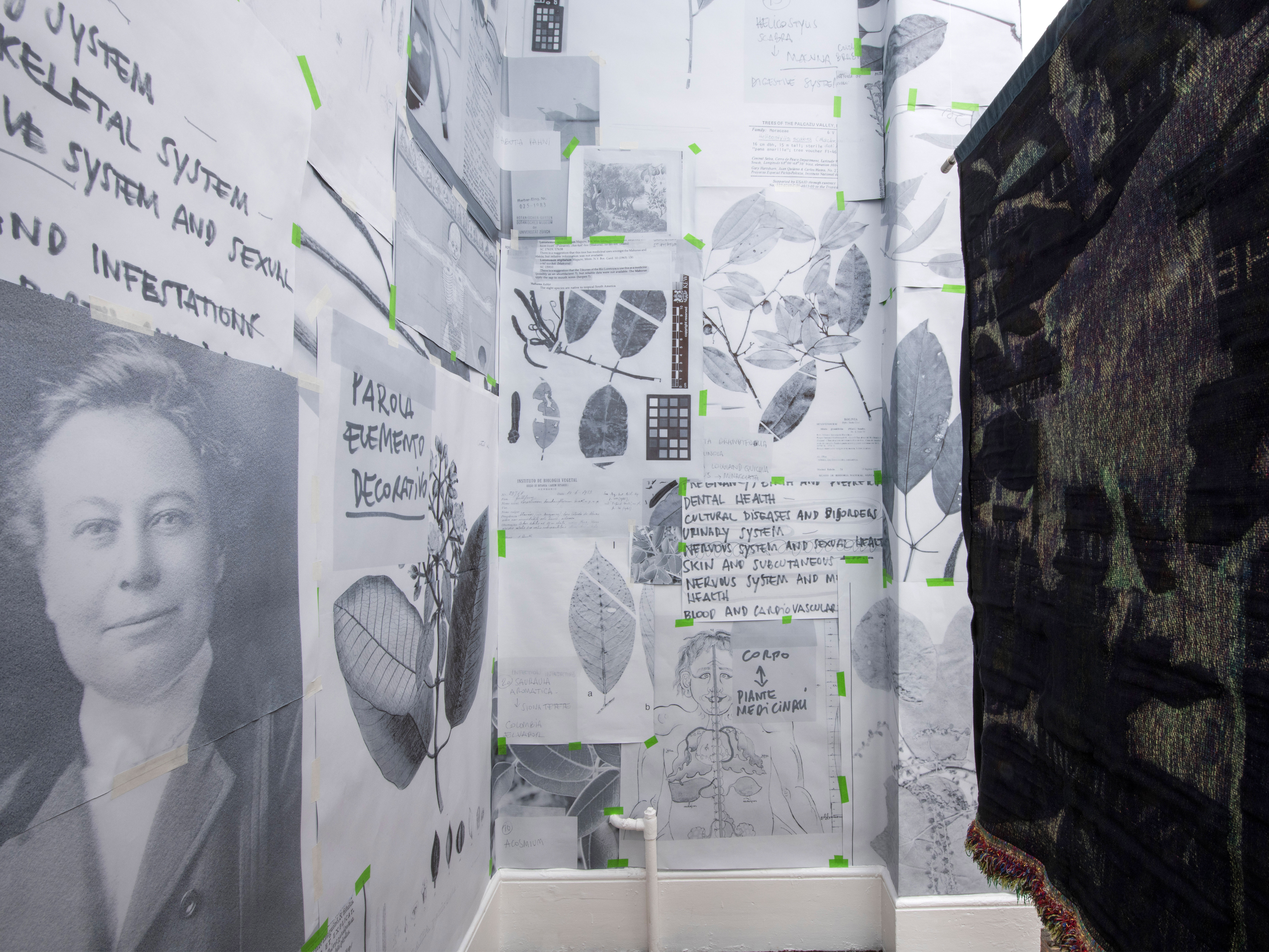
Jacquard fabric with lampas effect on the weft, 150 x 250 cm. 1/5 Edition. Installation view Moca London. Photo Justin Piperger
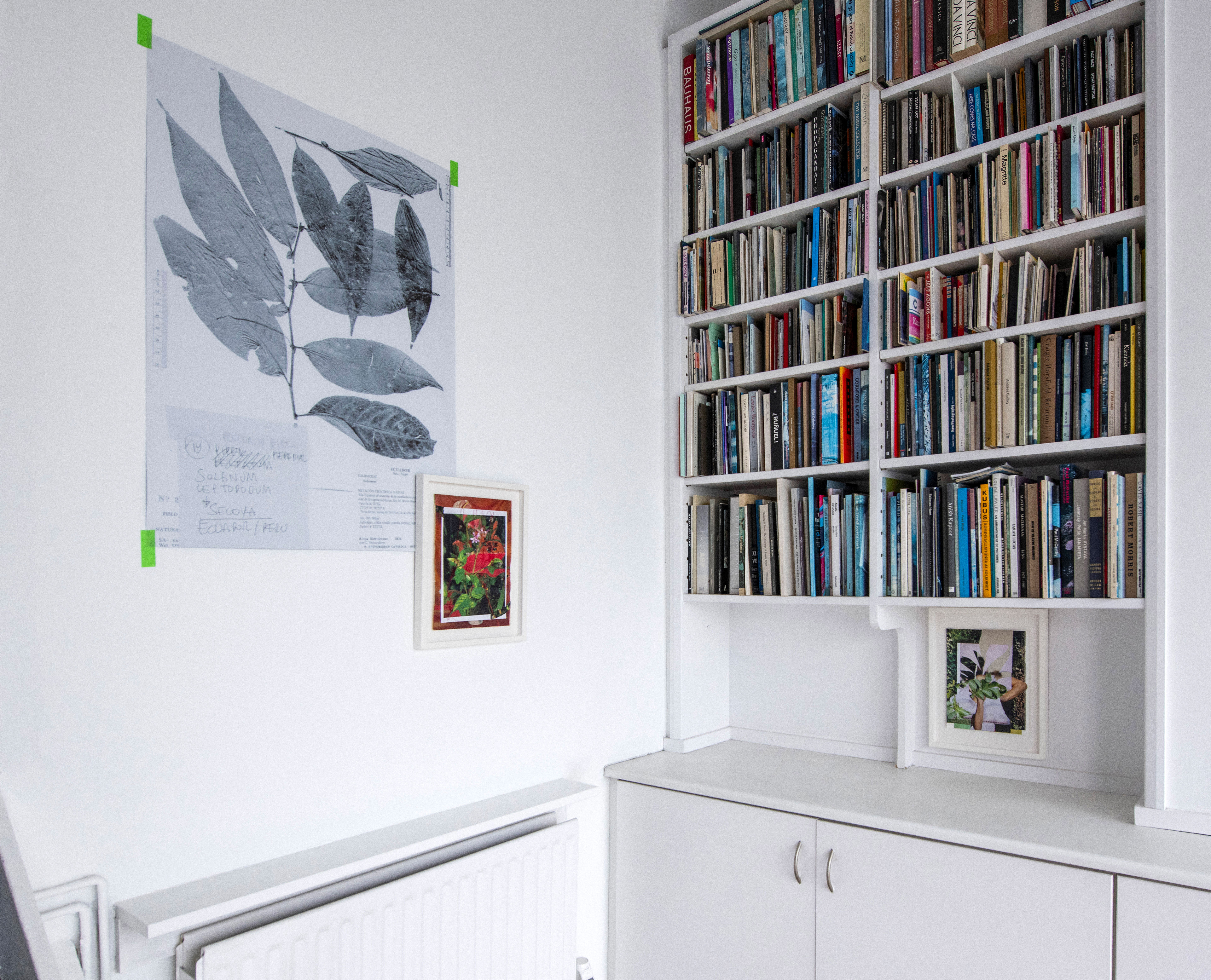
Cuphea Racemosa (La desinenza estinta), 2024. Collage and thread on paper 34.7 x 24.8 cm. / Margaret Ursula Brown Mee (La desinenza estinta), 2024. Collage on paper 30.5 x 24 cm.
Installation view Moca London. Photo Justin Piperger
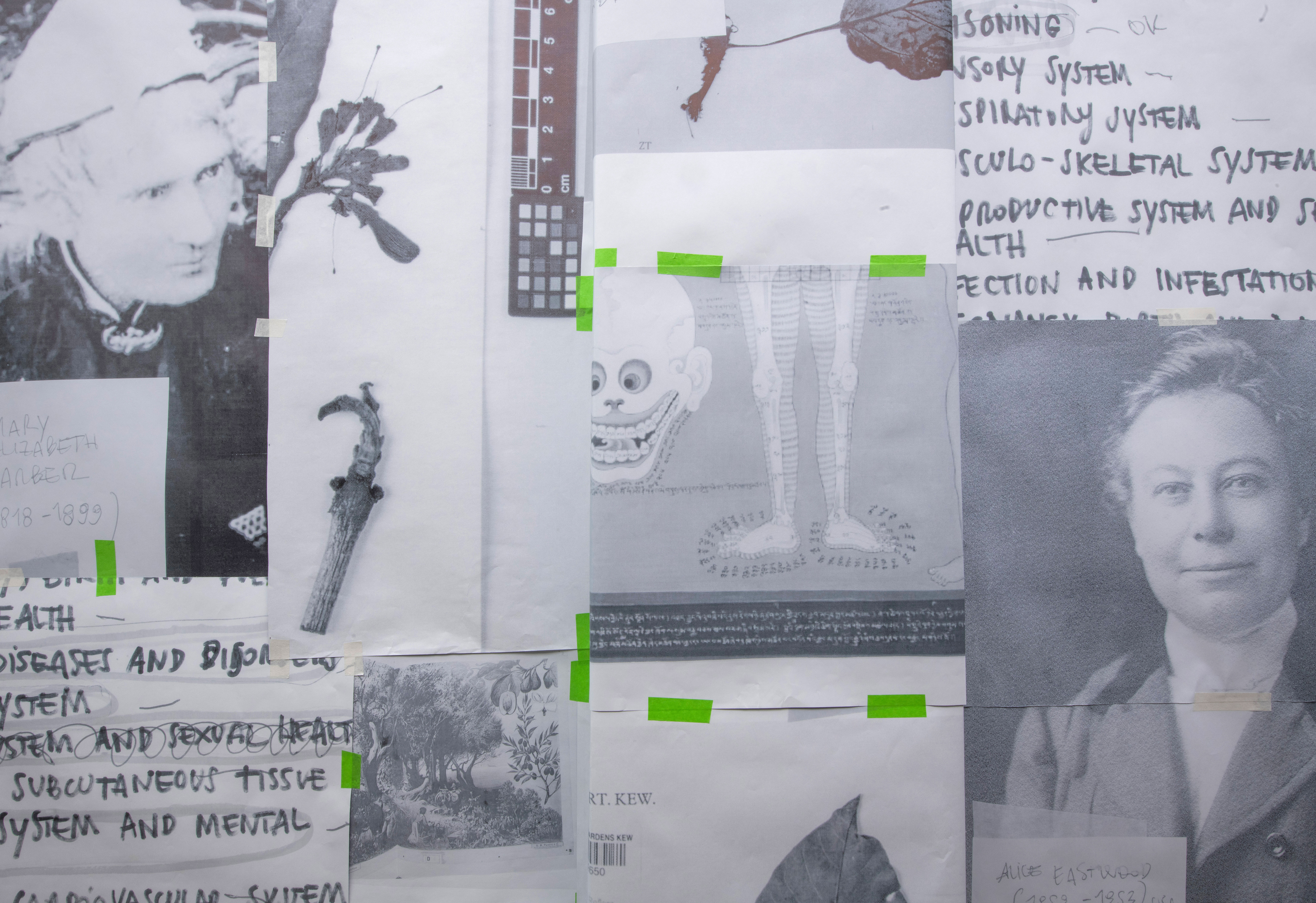
Black and white prints on paper. Detail. Photo Justin Piperger
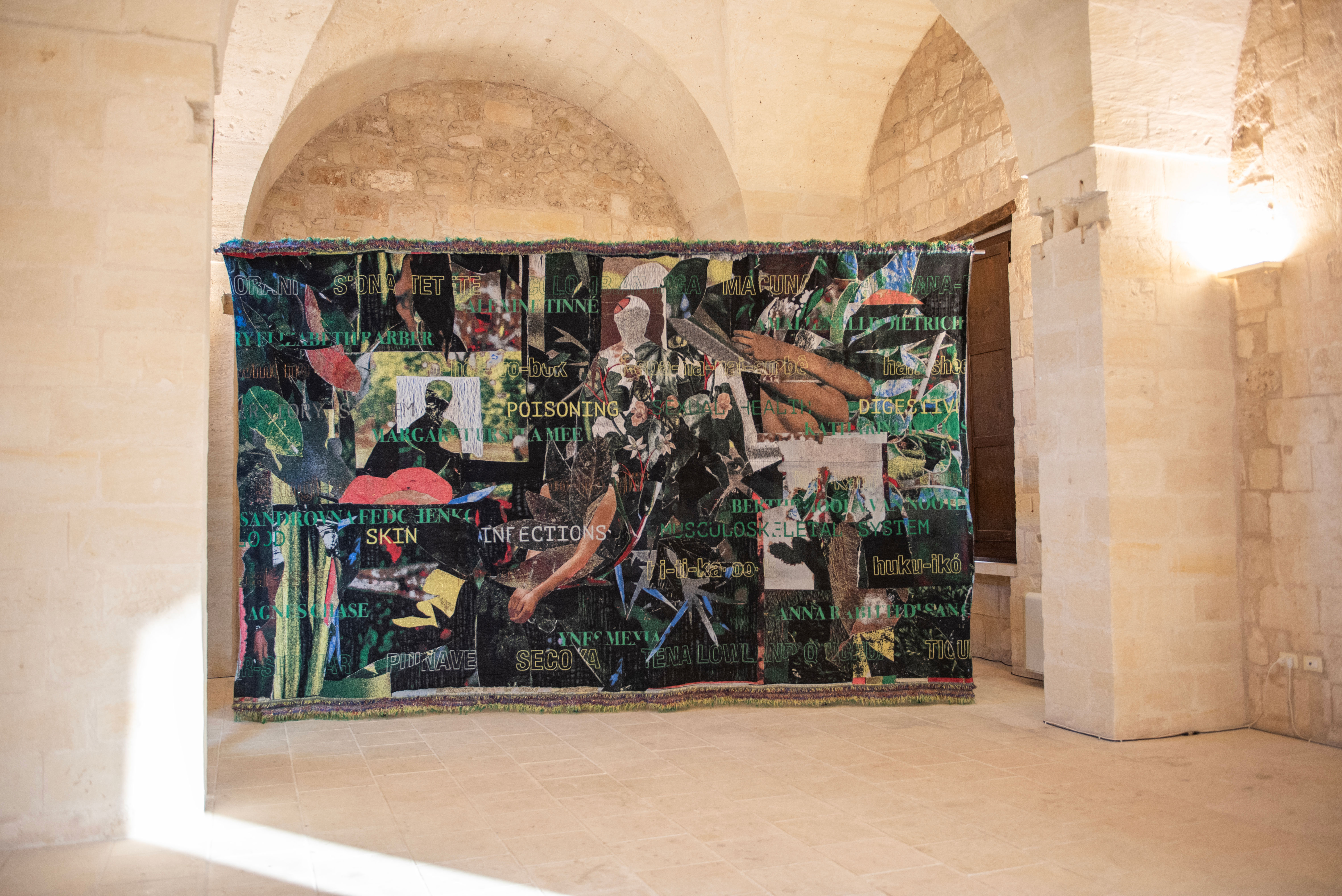
Jacquard fabric with lampas effect on the weft, 300 x 500 cm. Installation view Kora, Castrignano de’ Greci, Lecce. Photo Annalisa Lazoi
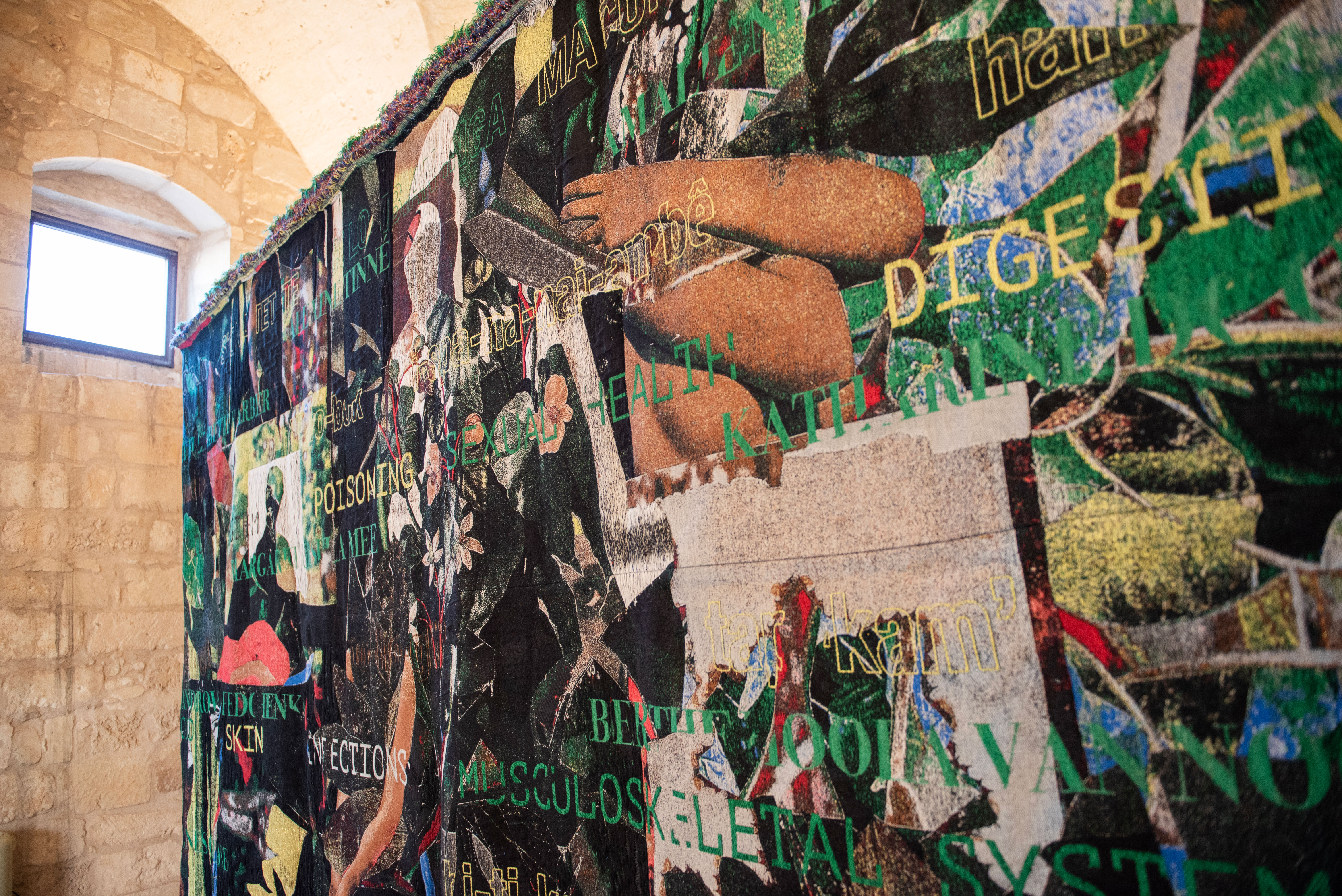
Jacquard fabric with lampas effect on the weft, 300 x 500 cm. Detail. Photo Annalisa Lazoi
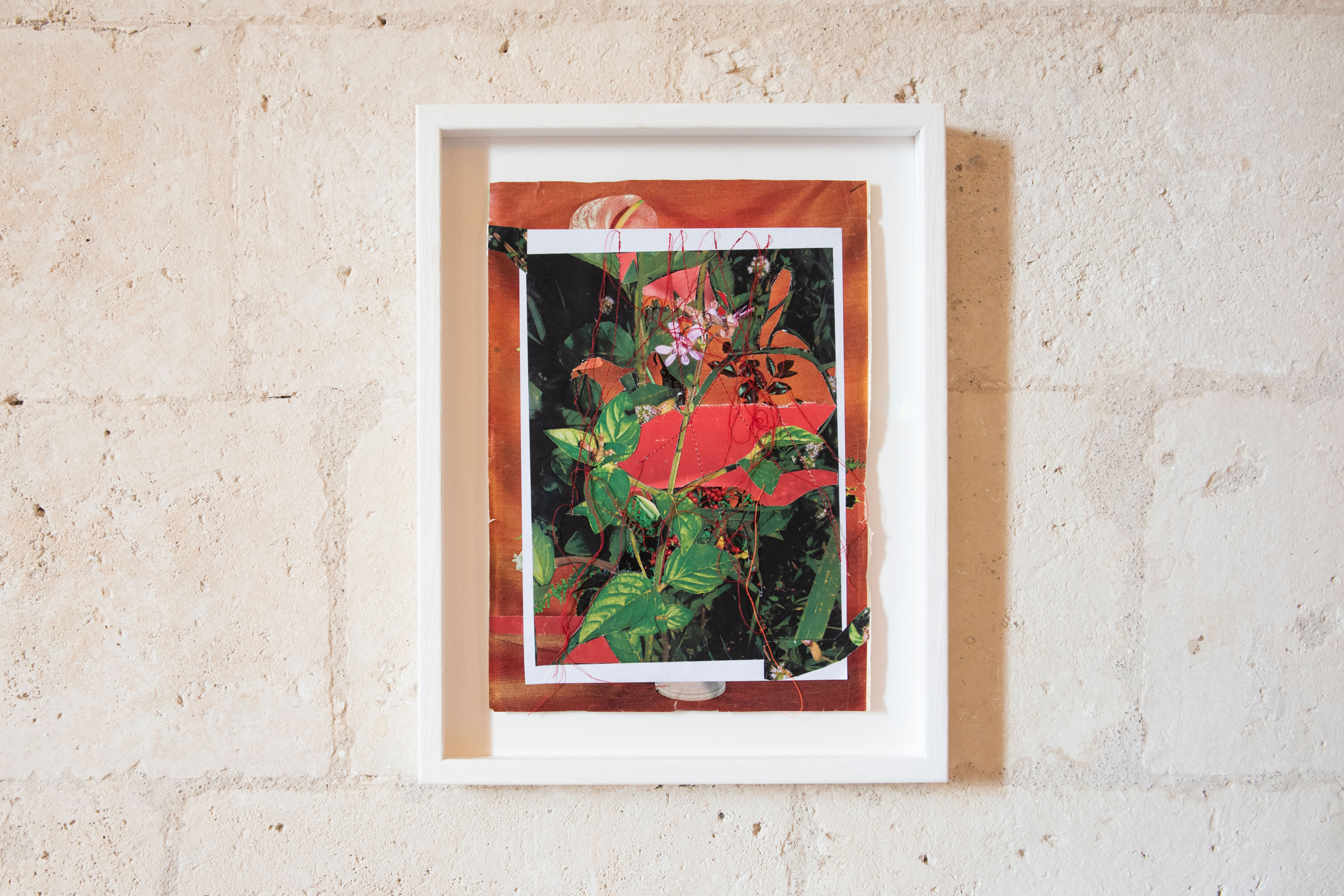
Cuphea Racemosa (La desinenza estinta), 2024. Collage and thread on paper 34.7 x 24.8 cm. Photo Annalisa Lazoi
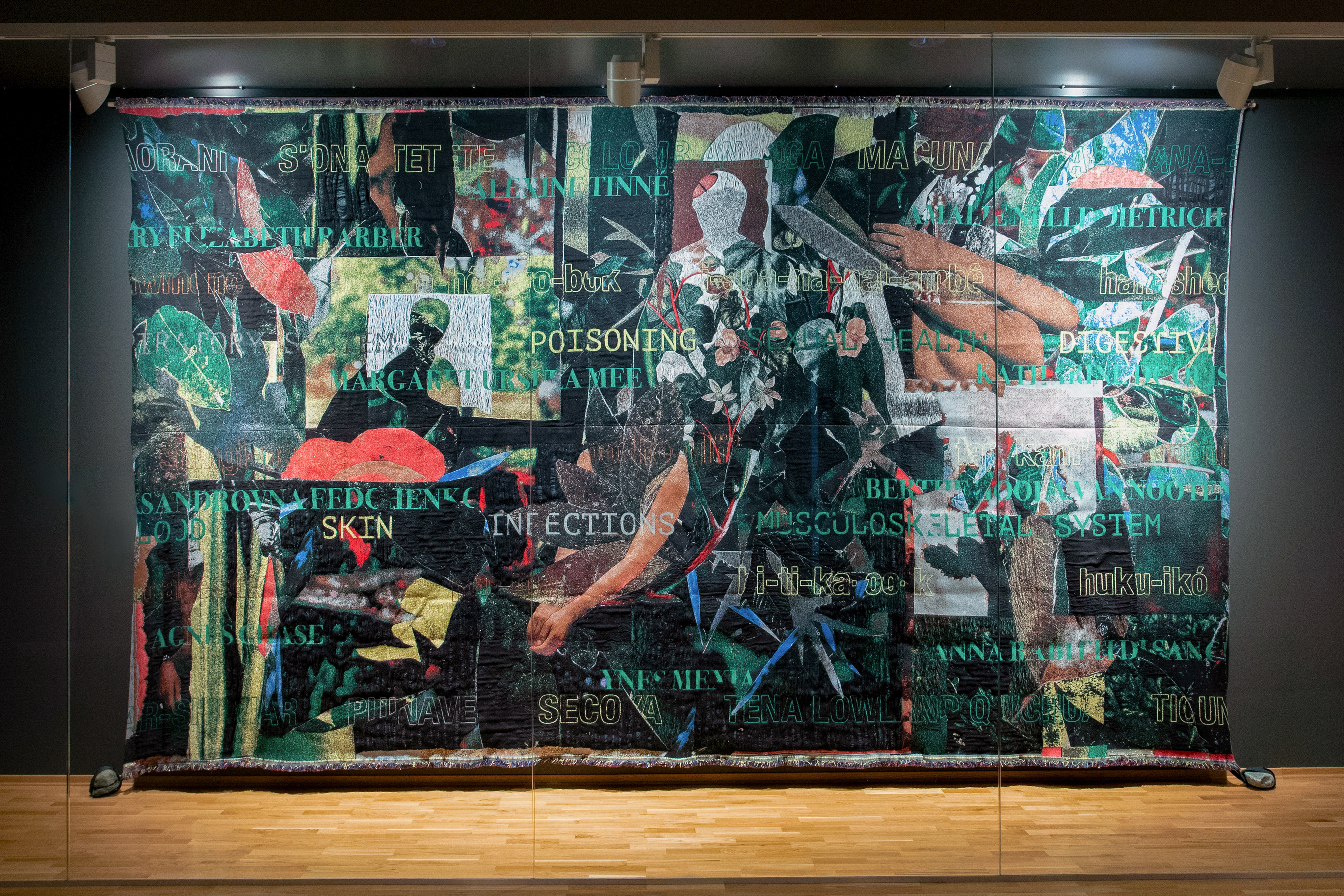
Jacquard fabric with lampas effect on the weft, 300 x 500 cm. Installation view Hannah Ryggen Center, Ørland Kultursenter, Brekstad, Norway. Photo Freia Beer
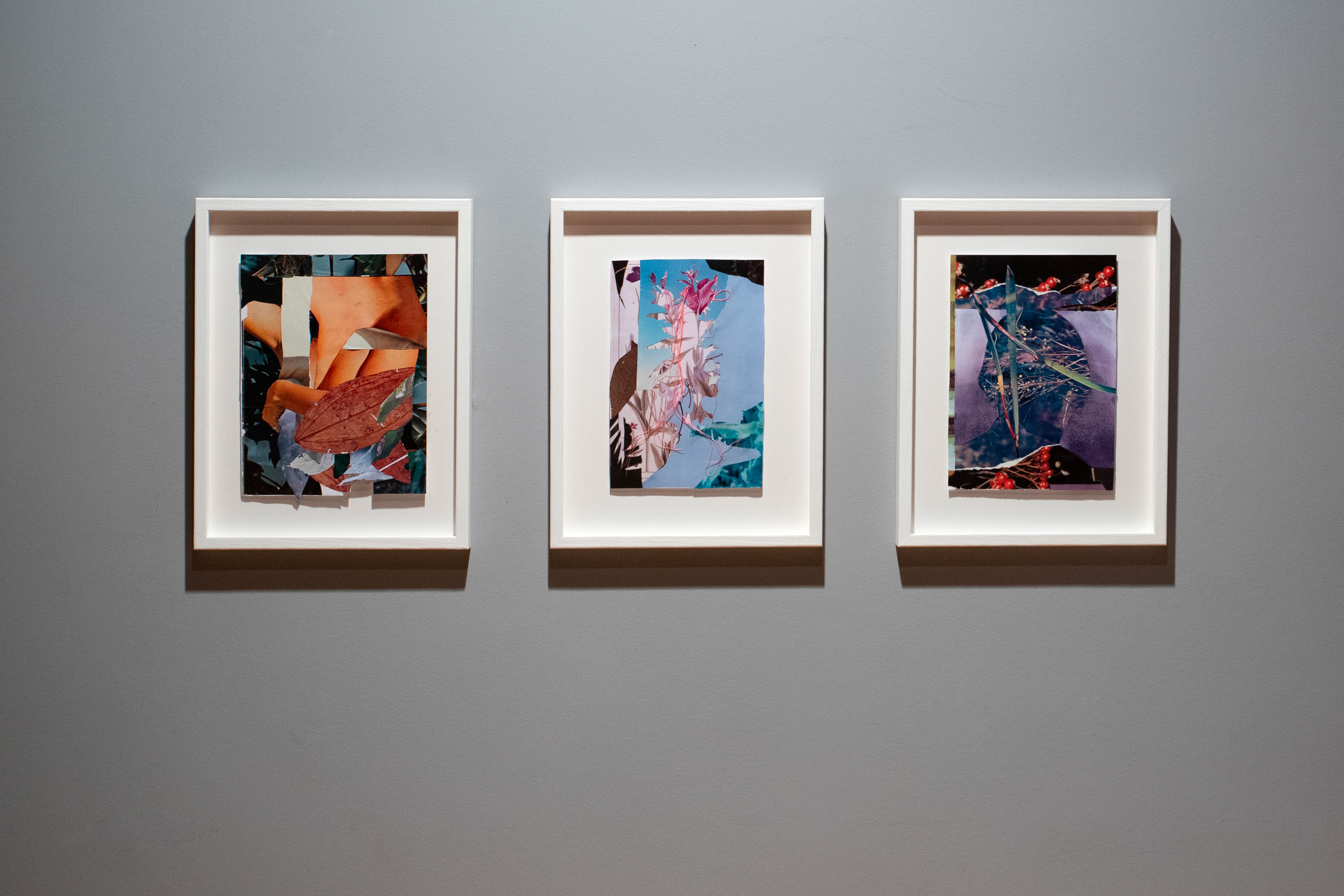
Collages and thread on paper. Installation view Hannah Ryggen Center, Ørland Kultursenter, Brekstad, Norway. Photo Freia Beer
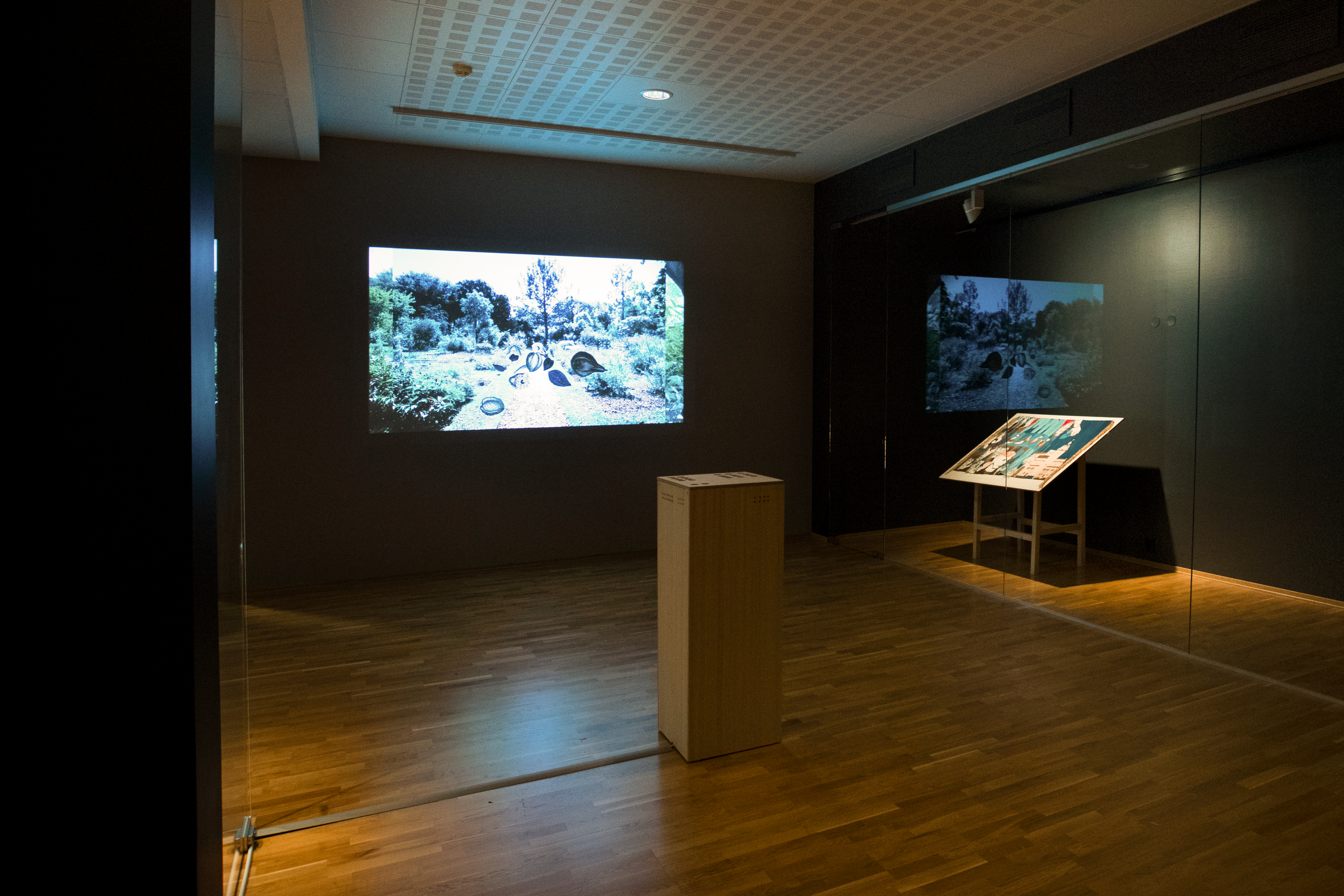
Video HD, colours, black and white, stereo sound, 16:9, 7’30’’. Installation view Hannah Ryggen Center, Ørland Kultursenter, Brekstad, Norway. Photo Freia Beer
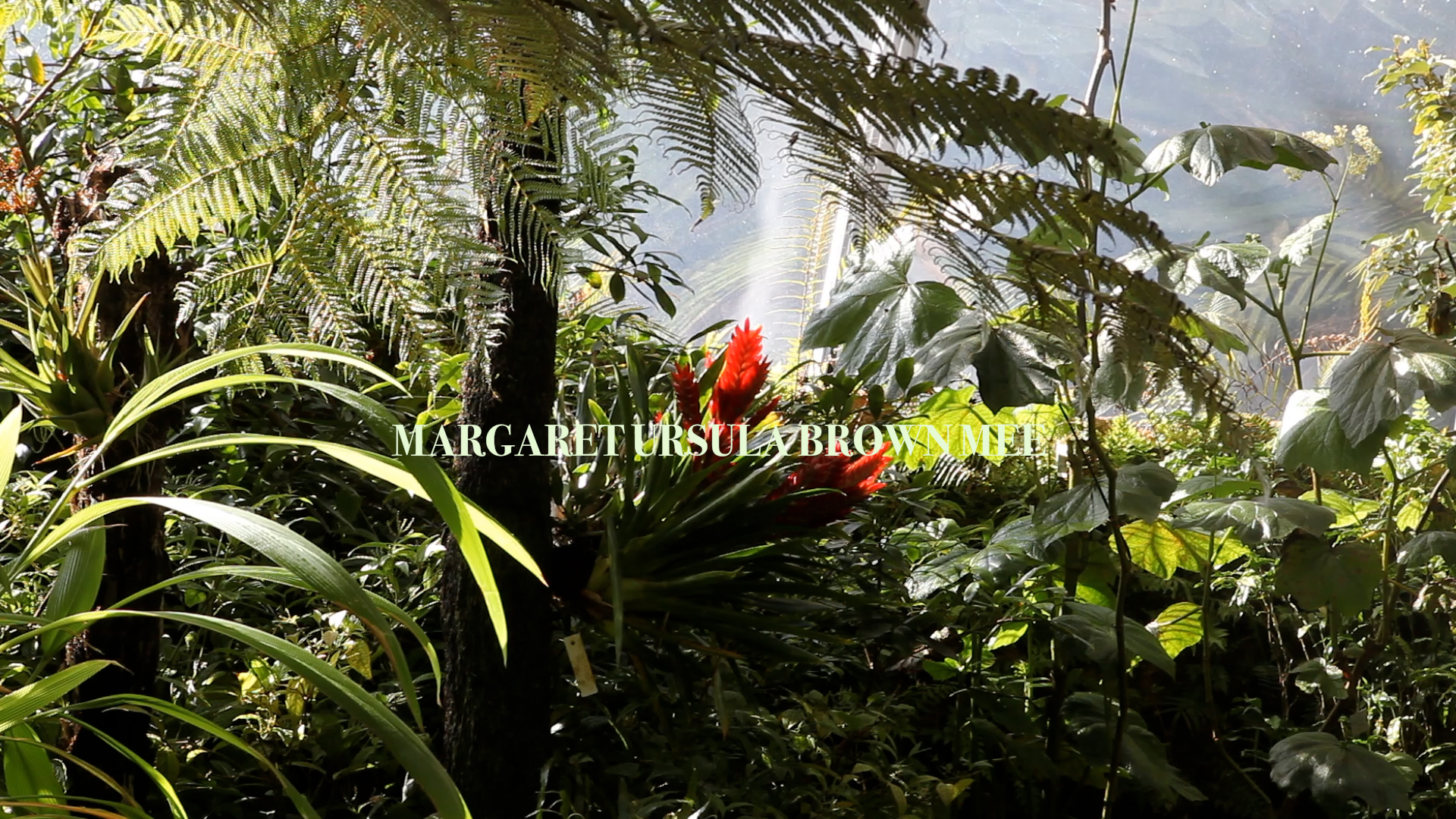
Video HD, colours, black and white, stereo sound, 16:9, 7’46’’. Frame from video
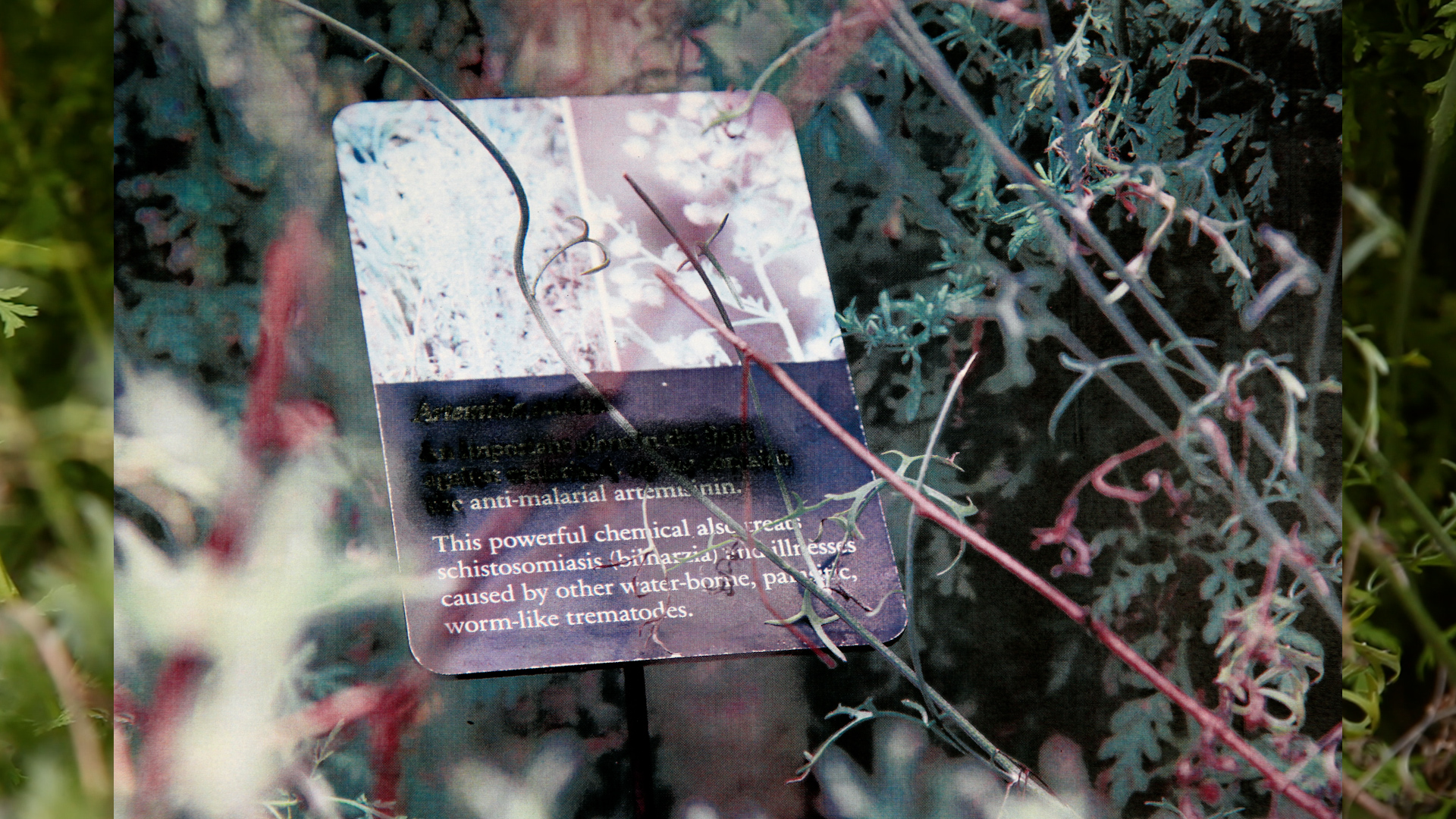
Video HD, colours, black and white, stereo sound, 16:9, 7’46’’. Frame from video
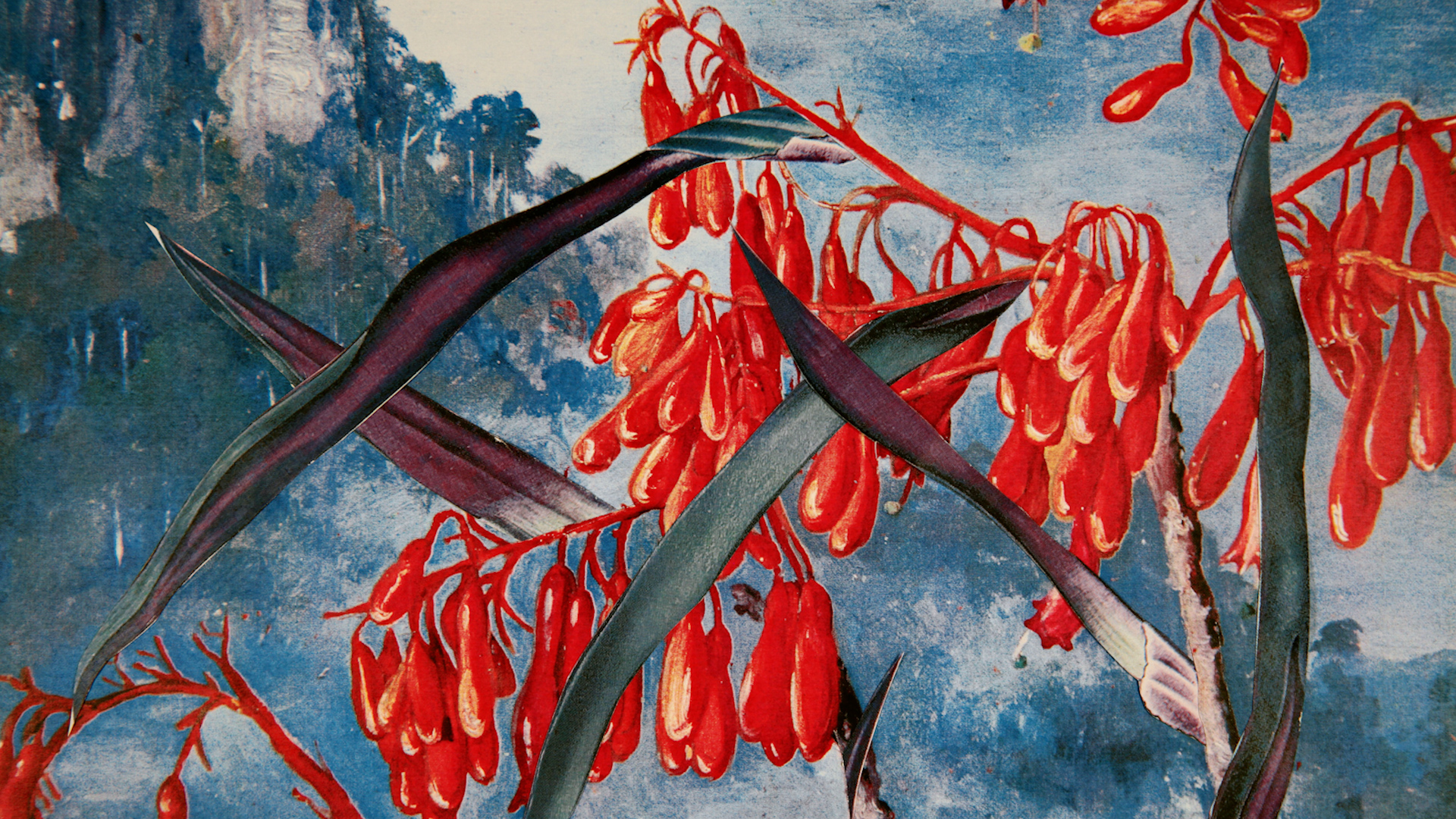
Video HD, colours, black and white, stereo sound, 16:9, 7’46’’. Frame from video
La desinenza estinta (The Extinct Desinence), 2024
progetto vincitore Italian Council (12.a Edizione, 2023), programma di promozione di arte contemporanea italiana nel mondo della Direzione Generale Contemporanea del Ministero della Cultura.
winner project Italian Council (12.a Edition, 2023), programme for the promotion of Italian contemporary art in the world of the Contemporary General Directorate of the Ministry of Culture.
Tessuto jacquard effetto lampasso di trame
Jacquard fabric with lampas effect on the weft
3oo x 5oo cm.
video HD, colori, bianco e nero, suono stereo, 16:9, 7’46’’
HD video, colour, black and white, stereo sound, 16:9, 7’46”
progetto / project
Lucia Veronesi
curato e prodotto da / curated and produced by
Ramdom (Italia)
sostenuto da / supported by
Direzione Generale per la Creatività Contemporanea del Ministero per i Beni e le Attività Culturali nell’ambito del programma Italian Council (XII edizione, 2023) che mira a promuovere l’arte contemporanea italiana nel mondo
Directorate – General for Contemporary Creativity of the Italian Ministry of Culture under the Italian Council program (12th Edition, 2023) which aims to promote Italian contemporary art worldwide
in collaborazione con / in collaboration with
Nordenfjeldske Kunstindustrimuseum MiST (Trondheim, Norvegia)
con il supporto di / with the support of
Università di Zurigo – Dipartimento di botanica sistematica ed evoluzionistica e Dipartimento di biologia evoluzionistica e studi ambientali (Zurigo, Svizzera)
Goldsmiths University (Londra, UK)
Ca’ Pesaro-Galleria Internazionale d’Arte Moderna (Venezia, Italia)
Istituto Italiano di Cultura di Oslo
Il progetto è realizzato grazie al supporto di / the project is made thanks to the support of
Collezione Luca Bombassei
La desinenza estinta è un’opera che fa parte della collezione permanente di Ca’ Pesaro-Galleria Internazionale d’Arte Moderna
The Extinct Desinence is an artwork that is part of the permanent collection of Ca’ Pesaro-Galleria Internazionale d’Arte Moderna
Catalogo a cura di Paolo Mele, Lucia Veronesi, Claudio Zecchi, edizione bilingue italiano e inglese, Marsilio Arte Editore
Catalog curated by Paolo Mele, Lucia Veronesi, Claudio Zecchi, bilingual Italian and English, Marsilio Arte Publisher
La desinenza estinta è un progetto artistico sulla cancellazione culturale che si sviluppa su tre livelli.
Il primo si ispira a uno studio sulle lingue indigene e sulla perdita delle conoscenze medicinali, condotto da Rodrigo Cámara-Leret e Jordi Bascompte dell’Università di Zurigo.
La loro ricerca ha interessato tre macroaree: Nordamerica, Nordovest dell’Amazzonia e Nuova Guinea. Gli indigeni di quelle zone si tramandano gli usi delle piante medicinali soltanto oralmente. Molte piante e i corrispettivi usi farmaceutici sono noti solo a certe lingue. Se quelle lingue si estinguono, anche il loro sapere sparisce, e così le piante: continueranno a esistere sulla Terra ma nessuno sarà più in grado di riconoscerle, nominarle e usarle. Si stima che il 30% delle lingue si estinguerà entro la fine del XXI secolo: il sapere medicinale delle culture indigene è fortemente minacciato. Le piante prese in considerazione da La desinenza estinta provengono dal Nordovest dell’Amazzonia. Si riportano qui loro nomi indigeni e le lingue, l’area geografica, il grado di estinzione di ogni lingua, il nome scientifico della pianta e il suo uso medico. Per i nomi indigeni delle piante, l’uso medicinale e i nomi delle popolazioni si è fatto riferimento a The Healing Forest: Medicinal and Toxic Plants of the Northwest Amazonia, di Richard Evans Schultes e Robert Raffauf. I nomi scientifici, i nomi delle lingue e il loro grado di estinzione sono ricavati dalla ricerca di Cámara-Leret e Bascompte. Per valutare il grado di minaccia delle lingue, i due studiosi hanno consultato come fonte principale Glottolog, che ricava l’AES (Agglomerated Endangerment Status) dai database di The Catalog of Endangered Languages, United Nations Educational, Scientific and Cultural Organitazion, Atlas of the World’s Languages in Danger e Ethnologue. A questo primo livello sono ispirate le immagini dei collage botanici, con delle brevi didascalie.
Il secondo livello di cancellazione riguarda le donne che si sono occupate di botanica dal Settecento al Novecento. Si tratta di scienziate e artiste illustratrici che, in patria o in paesi esotici, hanno raccolto esemplari di piante ignote, li hanno classificati, catalogati, studiati, disegnati, dipinti. Molte di loro sono state espunte dai libri di storia, o hanno dovuto lottare duramente per ottenere un inquadramento professionale o accademico. Storie di donne che, seppur diverse per formazione scientifica e per estrazione sociale, hanno lavorato gratuitamente per anni, hanno avuto riconoscimenti tardivi, si sono travestite da uomo per poter partecipare a spedizioni scientifiche, sono state escluse da missioni botaniche perché non ritenute adatte in quanto donne. Alla maggior parte delle botaniche menzionate, ed evocate dai miei collage, furono dedicati uno o più nomi di specie di piante, spesso ricavati dal loro cognome da sposata. Perciò in queste pagine figura anche il loro cognome da nubile. I primi due livelli della Desinenza estinta hanno fra loro un rapporto simile a un’equazione: le lingue stanno alle piante come i nomi delle botaniche stanno alla storia della scienza.
Il terzo livello del progetto si connette così idealmente all’esempio fecondo di Hannah Ryggen, una delle artiste norvegesi più importanti del Novecento, che nei suoi arazzi seppe far convergere motivazioni politiche e soluzioni formali. Ryggen elevò la tecnica della tessitura ai gradi più sofisticati dell’arte contemporanea; era anche un’attivista che spesso usava l’arte per denunciare ingiustizie sociali e politiche. I suoi lavori, fatti interamente a mano con l’utilizzo di un telaio verticale, sono enormi manifesti dove astrazione e figurazione costruiscono una narrazione complessa, all’altezza delle più avanzate ricerche artistiche del suo tempo. Nei suoi arazzi, l’elemento tessile stesso è un ingrediente ricavato dal paesaggio norvegese, che così entra nel suo lavoro concretamente, intensificando il rapporto delle immagini con la natura. La sua ricerca si può leggere come una riflessione eco-filosofica: la relazione fra esseri umani e ambiente naturale coinvolge sia i soggetti rappresentati sia la materia organica di cui sono fatti gli arazzi e le condizioni in cui sono stati realizzati.
La pubblicazione non si propone, infine, di colmare un vuoto scientifico o culturale di secoli di storia, ma agisce piuttosto come strumento di ricerca visiva e complementare al lavoro sviluppato con l’arazzo e il video. Questi tre “oggetti” dialogano tra di loro e sono l’uno il complemento dell’altro. In particolare, restituisce un percorso di ricerca annuale compiuto tra Londra, Zurigo e Trondheim, senza ripercorrerne le tappe in sequenza cronologica. Ogni aspetto registrato in questi tre momenti è un filo che s’intreccia in una storia più ampia e complessa; una storia allo stesso tempo locale e universale, le cui ricadute formali, tra collages di piante e di botaniche, video e lavori in tessuto, aprono a nuovi paradigmi visivi, nuove composizioni figurali e cromatiche.
La desinenza estinta (The Extinct Desinence) is an artistic project on cultural cancellation that develops on three levels.
The first is inspired by a study of indigenous languages and the loss of medicinal knowledge, conducted by Rodrigo Cámara-Leret and Jordi Bascompte of the University of Zurich.1 Their research covered three macro-areas: North America, Northwest Amazon and New Guinea. The indigenous peoples of these areas hand down their knowledge of the uses of medicinal plants only by word of mouth. Many plants and their pharmaceutical uses are known only in certain languages. If those languages become extinct, their knowledge also disappears, and so do the plants. They will continue to exist on Earth but no one will be able to recognise, name and use them any longer. It is estimated that 30 percent of all languages will be extinct by the end of the 21st century. The medicinal knowledge of indigenous cultures is seriously threatened. The plants considered by La desinenza estinta come from the Northwest Amazon. Here we record their indigenous names and their respective languages, geographical area, degree of extinction of each language, scientific names of the plants and their medicinal uses. For indigenous plant names, their medicinal uses and the names of the peoples, reference was made to The Healing Forest: Medicinal and Toxic Plants of the Northwest Amazonia, by Richard Evans Schultes and Robert F. Raffauf. Their scientific names, the names of the languages and their degrees of extinction are derive from the research by Cámara-Leret and Bascompte. To assess the degree of threat to the languages, the two scholars consulted Glottolog as their main source. This derives the AES (Agglomerated Endangerment Status) from the databases of the UNESCO Atlas of the World’s Languages in Danger, and Ethnologue: Languages of the World by SIL International (Summer Institute of Linguistics). This first level inspired the images of the botanical collages, with brief captions.
The second level of loss concerns women who worked in botany from the 18th century to the 20th. They were female scientists and illustrators who, in their homelands or in distant countries, collected specimens of unknown plants and classified, catalogued, studied, drew and painted them. Many of them have been cancelled from the history books, or had to struggle hard to gain professional or academic standing. These are stories of women who, although differing in their training and social backgrounds, worked unpaid for years, won recognition late, disguised themselves as men to take part in scientific expeditions, or were excluded from botanical missions because they were considered unsuitable as women. Most of the women botanists mentioned here, and evoked by the collages, had one or more plant species named after them, often derived from their married surname. For this reason, their maiden names also appear in these pages. The relation between the first two levels of La desinenza estinta resemble a mathematical proportion: languages are to plants as the names of botany are to the history of science.
The third level of the project is thus ideally connected to the fruitful example of Hannah Ryggen, one of the most important Norwegian artists of the 20th century, whose tapestries combined political motivations with formal patterns. Ryggen raised the technique of weaving to the most refined levels of contemporary art. She was also an activist who often used art to denounce social and political injustices. Her works, entirely hand-made on a vertical loom, are like huge posters, where abstraction and figuration construct a complex narrative, on the cutting edge of the most advanced artistic research of her time. In her tapestries, the textile element itself is an ingredient taken from the Norwegian landscape, which thus entered her work concretely, intensifying the relationship of images with nature. Her work can be read as an eco-philosophical reflection: the relationship between human beings and the natural environment involves both the subjects represented and the organic matter of which the tapestries are made, as well as the conditions in which they were made.
Finally, the publication does not aim to fill a scientific or cultural vacuum of centuries of history. Rather it serves as a tool of visual research, and complements the work done in tapestry and video. These three objects dialogue with and complement each other. The publication, in particular, records on the whole the annual path of research conducted between London, Zurich and Trondheim, without retracing the stages in a chronological sequence. Each aspect recorded in these three phases is a thread entwined with a broader and more complex story; a story that is both local and universal, whose formal outcomes, including collages of plants and botanists, videos and fabrics, open up new visual paradigms, new figural and chromatic compositions.